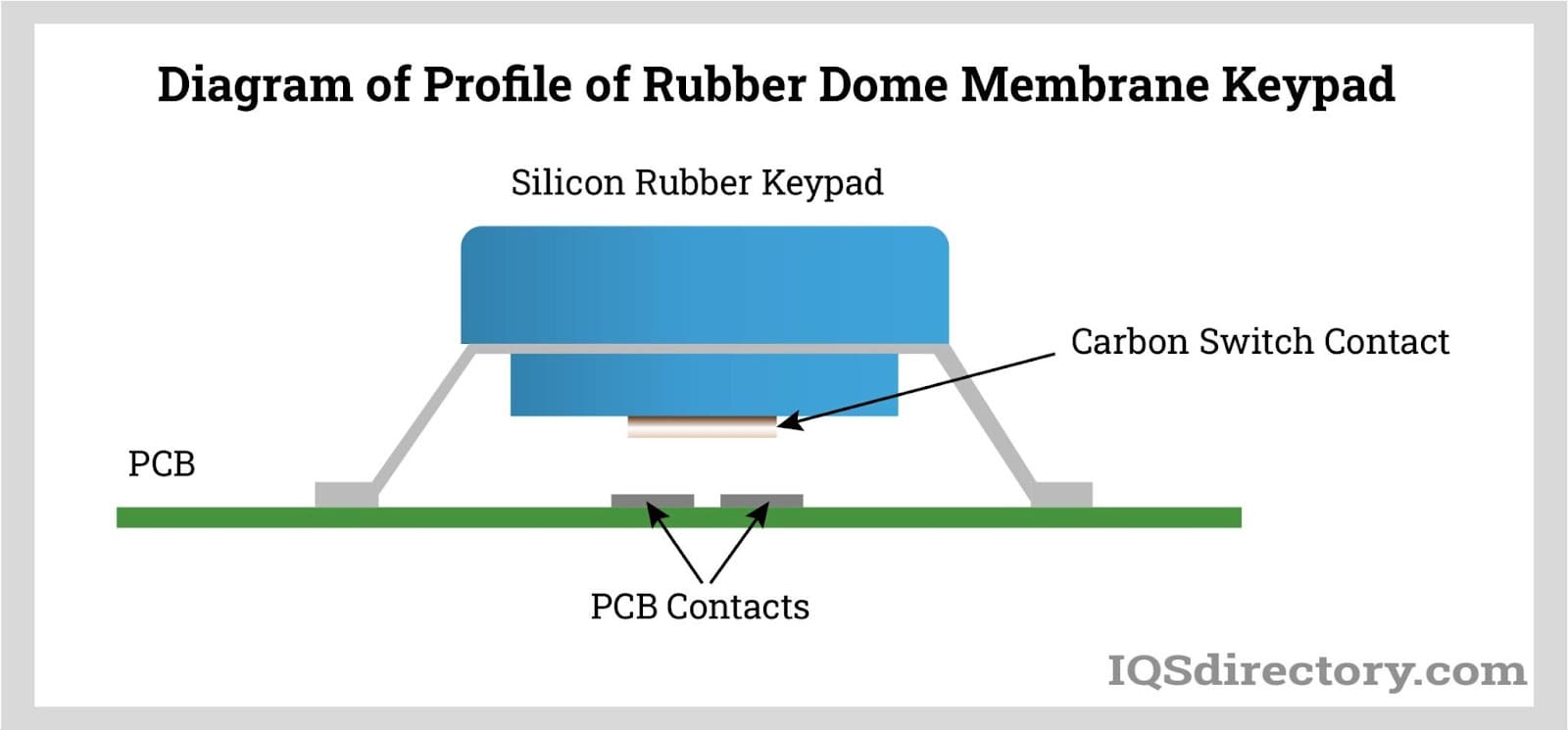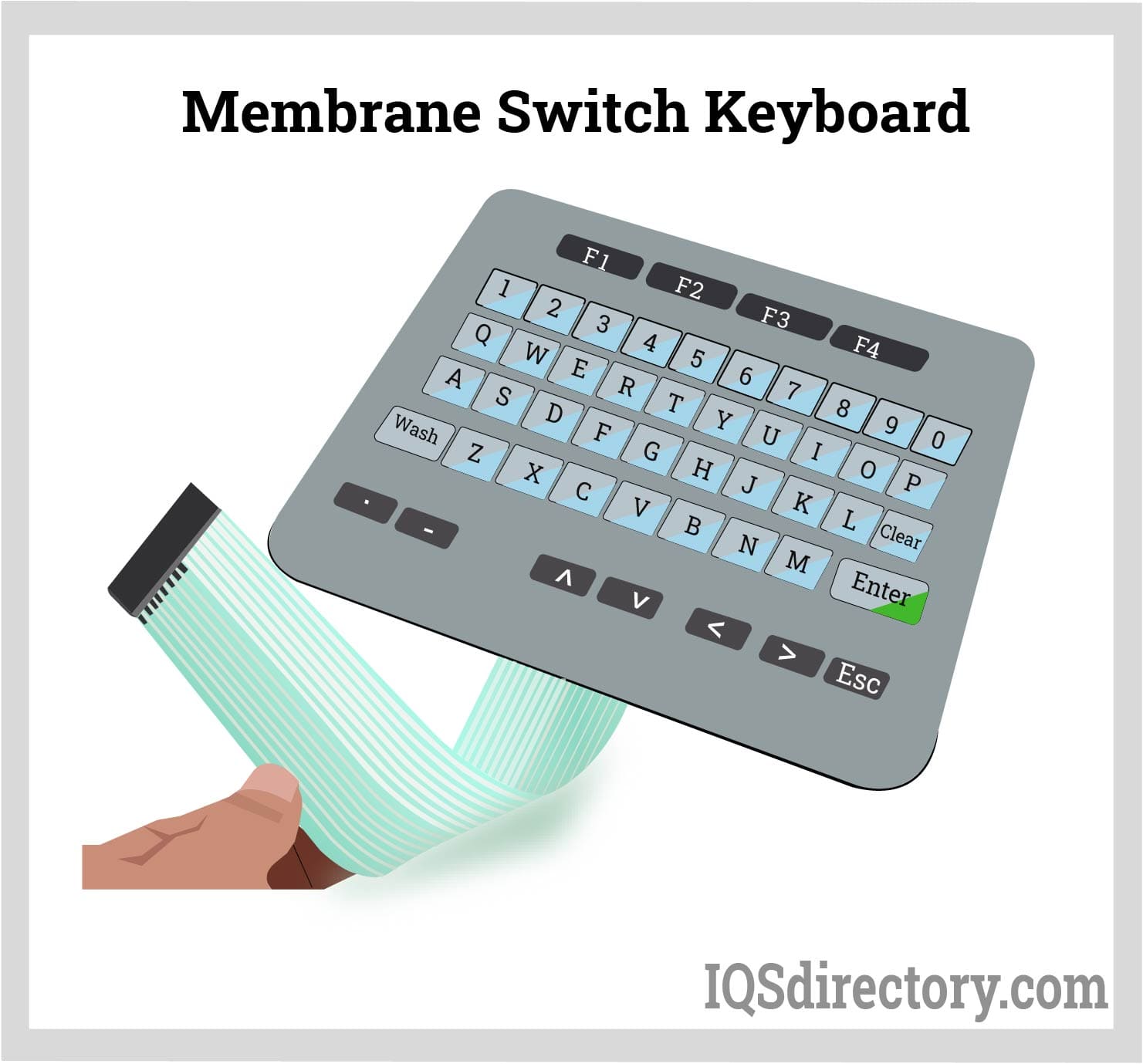What makes membrane switch a popular choice in automotive dashboards?
The Manufacturing Refine Behind Membrane Switch Over: What You Need to Know
The production process behind membrane layer changes combines careful style, material choice, and quality assurance. It starts with understanding the details of membrane button design and proceeds through numerous stages, including product choices and printing strategies. Each phase plays an essential function in making certain performance and longevity. The complexities of layer building and construction and the rigorous testing requirements may disclose insights that are not promptly noticeable. What lies beyond these fundamental components?
Understanding Membrane Change Layout
Membrane layer switches may appear easy at very first glimpse, their style entails detailed factors to consider that assure functionality and resilience. The style process begins with a complete understanding of customer needs, consisting of the user interface's desired application and ecological variables. Comfort designs is a crucial element, as the format has to promote convenience of usage while making certain that responsive responses satisfies individual expectations.Moreover, the layering of elements, such as graphic overlays, adhesive layers, and conductive traces, must be precisely crafted. membrane switch. This split setup not only influences the button's responsiveness yet likewise affects its longevity. Focus is offered to the securing methods employed to protect versus wetness and dust, which can endanger performance. Additionally, layout factors to consider reach aesthetic appeals, where color systems and aesthetic clarity boost individual experience. Ultimately, the layout of membrane layer switches equilibriums performance, user experience, and durability, making sure that they satisfy the needs of different applications effectively
Products Utilized in Membrane Layer Change Production
When choosing materials for membrane layer switch production, it is important to ponder both performance and durability. The main materials include polyester and polycarbonate movies, which offer adaptability and stamina. These movies are typically covered with sticky to assure proper bonding to substratums. Conductive inks, generally made up of silver or carbon, are crucial for developing electrical connections within the button, permitting reputable operation.Additionally, a safety layer, such as a hard layer, is frequently used to boost scratch resistance and durability. The selection of backing product, such as acrylic or foam, can considerably affect the button's tactile feel and general customer experience. Different ecological variables, including temperature and humidity, must lead product selection to guarantee peak performance in particular applications. Eventually, the appropriate mix of products adds to the membrane switch's functionality and lifespan, making informed options vital for makers.
The Printing Refine: Creating Video and Text
The printing procedure in membrane layer button production plays a substantial duty in generating high-grade graphics and message. Numerous visuals layout strategies are utilized to ensure visual charm and performance, while careful ink selection methods are important for resilience and performance. Understanding these components is basic for attaining finest results in membrane switch layout.
Graphic Style Techniques
Graphic design strategies play a crucial function in the printing process of membrane layer switches, as they define just how graphics and text will inevitably appear on the final item. Efficient visuals style involves the critical use of fonts, designs, and colors to boost readability and visual allure. Designers usually use vector graphics for scalability, ensuring that pictures continue to be sharp at different dimensions. Furthermore, attention to contrast and placement is important, as it affects user interaction and visual quality. The unification of branding elements, such as logos, have to be managed with like maintain brand stability. Overall, thoughtful graphic layout strategies contribute significantly to the capability and beauty of membrane layer buttons, impacting user experience and item efficiency.
Ink Option Techniques
Selecting the suitable ink is essential for accomplishing the preferred aesthetic top quality and resilience in membrane switch production. Numerous ink kinds are utilized, consisting of solvent-based, water-based, and UV-curable inks. Each type offers distinct characteristics, such as adaptability, resistance, and attachment to environmental elements. Solvent-based inks are commonly preferred for their durability and vibrant colors, while water-based inks are more environmentally friendly but may have limitations in adhesion. UV-curable inks provide quick healing and durable efficiency. Furthermore, color matching methods guarantee that the selected inks align with layout requirements. Inevitably, the option of ink should think about elements such as application method, substratum compatibility, and end-use needs to accomplish exceptional results in membrane layer button graphics and text.
Layer Construction and Setting Up

Material Selection Process
A cautious choice of materials is necessary in the production procedure of membrane layer buttons, as it straight affects functionality and resilience. The primary materials utilized include polyester, polycarbonate, and different conductive inks. Polyester is typically preferred for its exceptional resistance to chemicals and abrasion, making it appropriate for harsh environments. Polycarbonate, on the other hand, provides superior clarity and impact resistance, which is beneficial for applications requiring visibility and effectiveness. Conductive inks, typically composed of silver or carbon, are important for creating Visit Website dependable electrical pathways. Furthermore, the choice of adhesive products influences the general stability of the switch - membrane switch. Evaluating variables such as ecological exposure, tactile feedback, and visual demands overviews suppliers in selecting the best materials for their specific applications
Layer Attachment Methods
Adhering layers in membrane layer button building is an important procedure that assures capability and durability. Various attachment methods are employed to safeguard suitable bonding between layers, which typically consist of making use of adhesives, warmth, and stress. Pressure-sensitive adhesives (PSAs) are typically used for their convenience of application and instant bonding capabilities. In addition, thermal bonding techniques can be used, where warm is made use of to trigger glue buildings, protecting a solid bond. The option of attachment technique greatly depends upon the products involved and the details application requirements of the membrane layer switch. Appropriate placement and uniform application of adhesives are vital to avoid issues, securing the button runs efficiently throughout its designated life-span.
Quality Assurance Procedures
Guaranteeing high quality control throughout the layer construction and assembly of membrane layer buttons is important for preserving efficiency and reliability. This process normally entails several important actions, including extensive examinations at each phase of production. Producers use innovative screening approaches, such as peel tests and adhesion assessments, to confirm the stability of layer bonds. Furthermore, aesthetic examinations are performed to identify any defects in printing or material disparities. Environmental conditions, such as temperature and humidity, are thoroughly kept an eye on to ensure suitable healing and attachment. In addition, normal calibration of tools assists preserve exact production requirements. By applying these top quality control procedures, makers can considerably decrease the risk of product failing, ensuring that the final membrane switches over fulfill the needed specs and customer assumptions.
Checking and Quality Assurance Steps

Developments in Membrane Layer Switch Over Innovation
As advancements in modern technology remain to develop, membrane layer buttons are taking advantage of cutting-edge advancements that enhance their capability and individual experience. One notable technology is the combination of capacitive touch modern technology, which enables for more instinctive and responsive customer interfaces. This shift not just improves visual appeals yet also lowers mechanical deterioration, expanding the life expectancy of the switches.Additionally, innovations in graphic overlay products have caused improved toughness and resistance to environmental aspects such as moisture and UV light. These materials currently offer improved quality and brightness, additional boosting the visual appeal.Furthermore, the consolidation of clever innovation is changing membrane layer switches into interactive control board, enabling connectivity with IoT gadgets. This connection fosters a seamless individual experience, leading the way for applications in different markets, from medical care to consumer electronics. Collectively, these advancements placement membrane switches as vital parts in modern-day device design.
Often Asked Concerns
For how long Does the Membrane Layer Switch Manufacturing Process Take?
The duration of the membrane switch manufacturing process can vary significantly. Aspects such as intricacy, products made use of, and manufacturing volume influence timelines, with normal manufacturing varying from a couple of days to a number of weeks for conclusion.
What Are the Typical Applications for Membrane Layer Buttons?
Membrane layer buttons are frequently used in different markets, consisting of vehicle controls, house devices, clinical gadgets, and consumer electronics (membrane switch). Their flexibility and sturdiness make them optimal for applications needing easy to use go right here user interfaces and dependable performance in varied settings
Can Membrane Layer Changes Be Customized for Specific Needs?

What Is the Life expectancy of a Regular Membrane Switch?
The life expectancy of a normal membrane layer button differs, but typically, it ranges from 1 to 5 million cycles. Aspects such as use, setting, and worldly top quality greatly influence resilience and overall performance in time.

Are Membrane Layer Changes Ecologically Friendly?
The environmental kindness of membrane layer switches over differs. Some materials used may not be recyclable, while others can be eco-friendly. The total influence depends upon producing methods and materials, necessitating mindful factor to consider throughout selection and disposal. The manufacturing procedure behind membrane switches combines mindful layout, material selection, and top quality control. It starts with understanding the intricacies of membrane layer switch layout and advances through numerous phases, including product options and printing techniques. When picking materials for membrane layer switch manufacturing, it is necessary to consider both efficiency and toughness. A cautious option of materials is essential in the production process of membrane layer switches, as it straight influences performance and resilience. The selection of adhesion technique mostly depends on the products involved and the certain application requirements of the membrane layer switch.